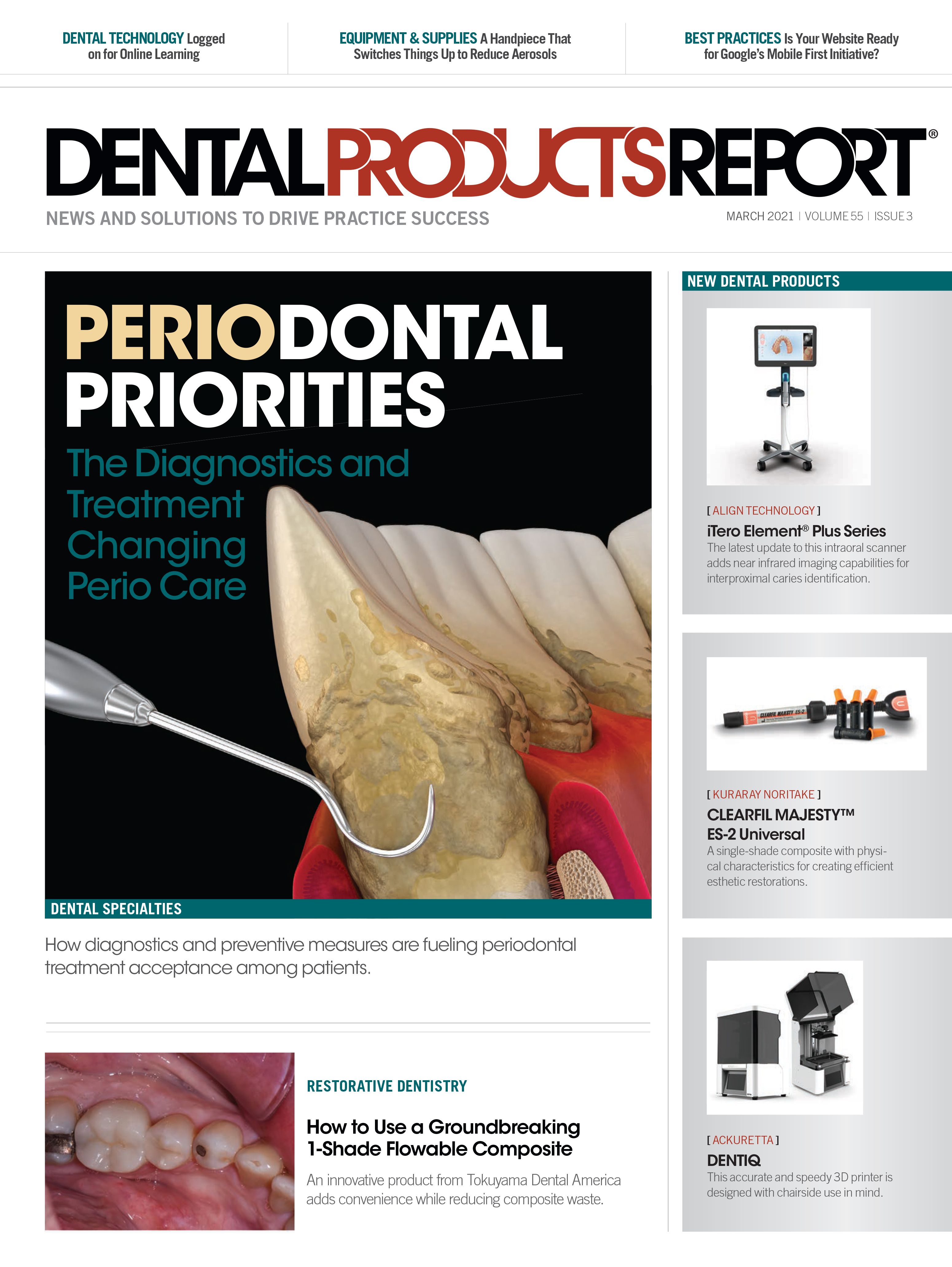Working With a Mastery of the Oral Microbiome
Technological innovations and increased knowledge of the oral microbiome can help our patients maintain oral health and improve oral health outcomes.
MAKSYM YEMELYANOV / STOCK.ADOBE.COM
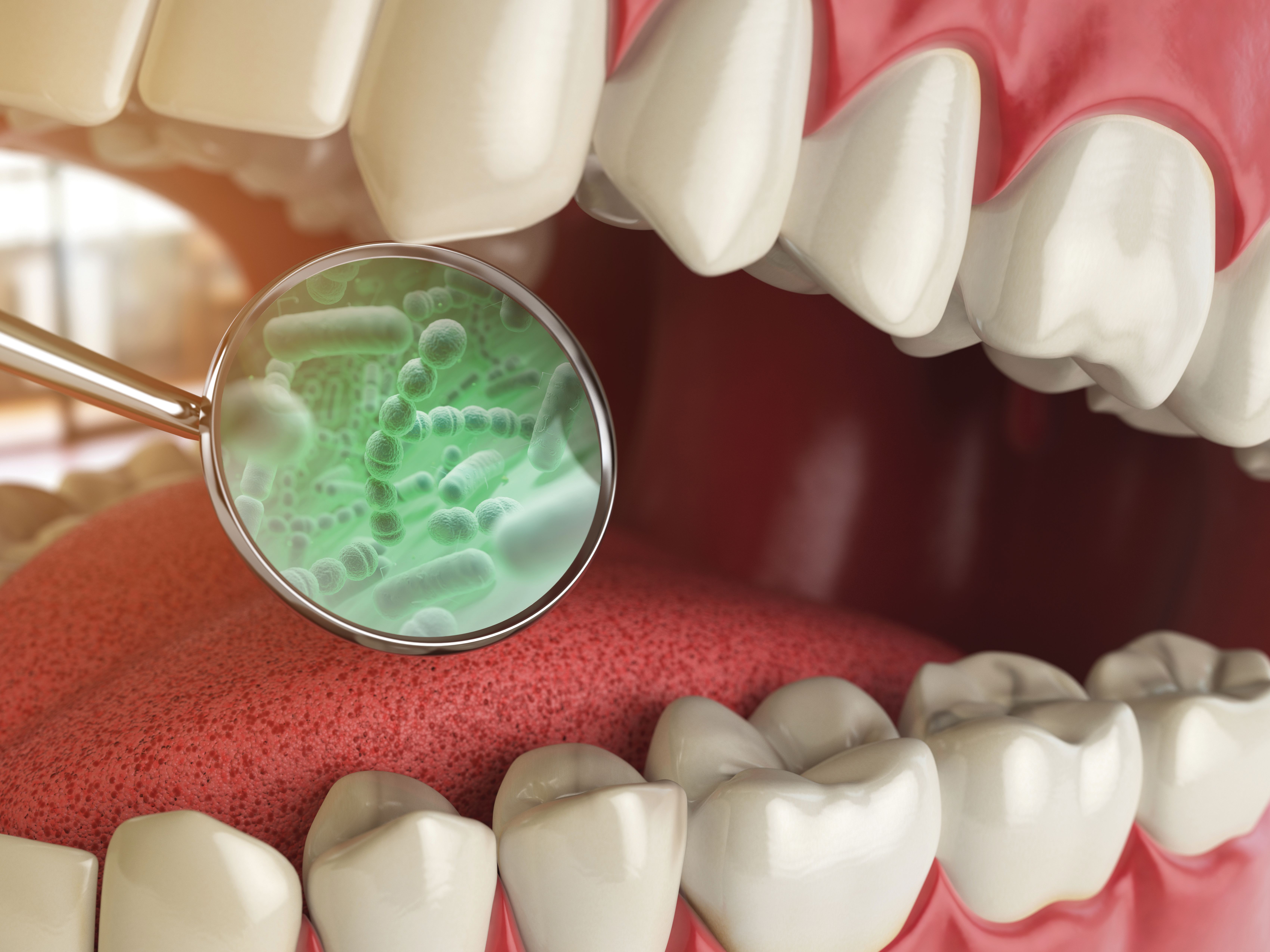
Science has unlocked many questions about the oral microbiome, which has led to solutions that target bacterial strains and are designed to combat the damaging effect to oral tissues. The oral cavity is home to the most diverse and largest microbiota in humans second only to the gut. It harbors an array of viruses, bacteria, fungi, and protozoa. The term “microbiome” was introduced by Joshua Lederberg to describe “the ecological community of symbiotic, commensal, and pathogenic microorganisms.”1 Although the terminology has changed over the years, plaque, materia alba, and biofilm are common words for many of us. Regardless of the naming, individuals face many challenges regarding the prevention and treatment of dental diseases; meanwhile, there are new products and emerging technologies that can help alter the microbiome as we know it.
The oral cavity has 2 main surfaces that bacteria colonize, the hard and soft tissue. The makeup of bacteria differs in relation to their location in the oral cavity; for example, those found in the gingival sulcus are different from those in the tonsils, which differ from those on the surface of the teeth. Whereas the core microbiome is similar in most people, there are variations based on the individual. Consider the diversity among siblings you may see in your practice, ranging from 1 who hardly ever brushes and never has cavities to another who is diligent about home care yet usually has 1 or 2 cavities at each recall. Same diet, same parents, but 2 very different oral conditions and outcomes. Some patients may express frustration as to why they are the one with decay versus their sibling who seemingly rarely picks up a toothbrush let alone uses it. What most patients do not understand is that differences in oral pH and bacterial microorganism balance can make someone more prone to the oral disease process. Diet, interactions among bacteria, and gene mutations can all affect the delicate bacterial balance and, more importantly, what can be done to combat the damaging effects of oral disease.1
Fortunately, with each passing year we learn more about the oral-systemic health link and therefore, as dental professionals, continue to invest in our patient education efforts. However, many patients (and even some medical providers) still believe the mouth is separate from the rest of the body. What they may not realize is that oftentimes, signs of systemic disease will be on display in the oral cavity well before other outward signs present themselves. The coronavirus disease 2019 pandemic brought to light the role of inflammation and the correlation between health and severity of disease. As a result, many individuals are taking an active role to minimize risk factors. This may be especially important, as many dental offices are seeing only a fraction of the patients they were seeing a year ago. A large number of patients are electing to postpone preventive care, putting them at greater risk of oral diseases.
In recent study results published by the University of Buffalo, investigators aimed to better understand how Porphyromonas gingivalis colonizes in the mouth, when it is unable to produce its own growth molecules without being largely established in the oral microbiome. P gingivalis is a common culprit in causing periodontal disease; in a patient with a healthy mouth it is present in smaller numbers and unable to replicate, compared with the mouth of a patient who has active periodontal disease. The study authors concluded that P gingivalis is opportunistic and “borrows growth molecules from V[eillonella] parvula, a common yet harmless bacteria in the mouth whose growth is not population dependent.”2 Patricia I. Diaz, DDS, PhD, lead investigator on the study and professor of Empire Innovation at the University at Buffalo School of Dental Medicine, and her team established that “if dental plaque is allowed to grow unchecked due to poor oral hygiene, V parvula will multiply and eventually produce enough growth molecules to also spur the reproduction of P gingivalis.” The delicate balance of the oral environment can be altered by adequate home care or lack thereof.
Altering the Complex Balance
Periodontist Sam Low, DDS, MS, an associate dean at the University of Florida, chief dental officer at BIOLASE, Inc, and consultant to various dental products companies, discussed how probiotics have come into general daily use for gut health. However, we are now beginning to see the incorporation of probiotics for oral health. The evolution of probiotics has included research to introduce specific strains that essentially force out the less desired pathogens. Low is also an advisor to ProBiora Health™, an oral health probiotic company, whose formulation is targeted to combat destructive oral pathogens including P gingivalis, deemed the “ringleader” by Dr Low. The benefit of specific formulations of probiotics such as ProBiora’s oral products is that they selectively crowd out particular pathogens in contrast tothe “kill them all” formulas that can also destroy beneficial bacteria. By targeting the undesirable bacteria, the beneficial bacteria can flourish, resulting in an alteration of the oral microbiome. As with anything in life, we look for balance, and maintaining the oral microbiome is imperative to oral and overall health.
One challenge dental professionals face is patient adherence, and it is important not to make a routine so difficult that it becomes a burden. ProBiora oral probiotics are as simple as a once-a-day dissolvable mint, leaving patients with no excuse for lack of adherence. Dr Low predicts that in 5 years, orally beneficial probiotics will be where gut probiotics are today in terms of public acceptance.
Alternatives for Everyday Use
As with any home care routine, oral health ones must be kept simple to increase patient adherence. Mouth rinses have been a standard of oral care for decades. Chlorhexidine is an effective staple product used post periodontal treatment and oral surgery, although it is not meant for long-term use. Oral rinses may be an easy solution for some individuals, but the strong alcohol-based rinses take a “kill them all” approach to bacterial reduction. For individuals with xerostomia, alcohol-based products used regularly exacerbate the condition’s effect. Xerostomia can become a life-altering condition that causes discomfort and greatly increases the caries risk. Instead, patients can opt for an alcohol-free rinse such as Oxyfresh’s line of oral rinses, which contain chlorine dioxide to oxidize and “kill” bacteria causing bad breath. Formulated with xylitol, essential oils, and a balanced pH, Oxyfresh oral care products provide an alternative to alcohol-based rinses and chlorhexidine.
Salivary Diagnostics
Patients who seem to be doing everything right yet continue to battle oral disease, such as periodontal disease and caries, may have an imbalance of oral flora. Salivary testing may provide the key to unlocking the mystery for those individuals. Using salivary testing in clinical practice enables the identification of the pathogens that are contributing to the disease process. The dental provider can then plan treatment accordingly, and identify the risk assessment and solutions moving forward. Saliva testing allows the provider to take into account other contributing risk factors, including smoking, xerostomia, poor oral hygiene, health conditions, and medication side effects. Although these factors contribute to the disease process, salivary testing provides the hard data that give oral health care professionals a more complete picture. For example, patients with gingivitis and certain high-risk bacteria likely will be at higher risk for development of periodontal disease, especially if they have or develop medical risk factors in the future.
Oxyfresh products provide an alternative to alcohol-based rinses.
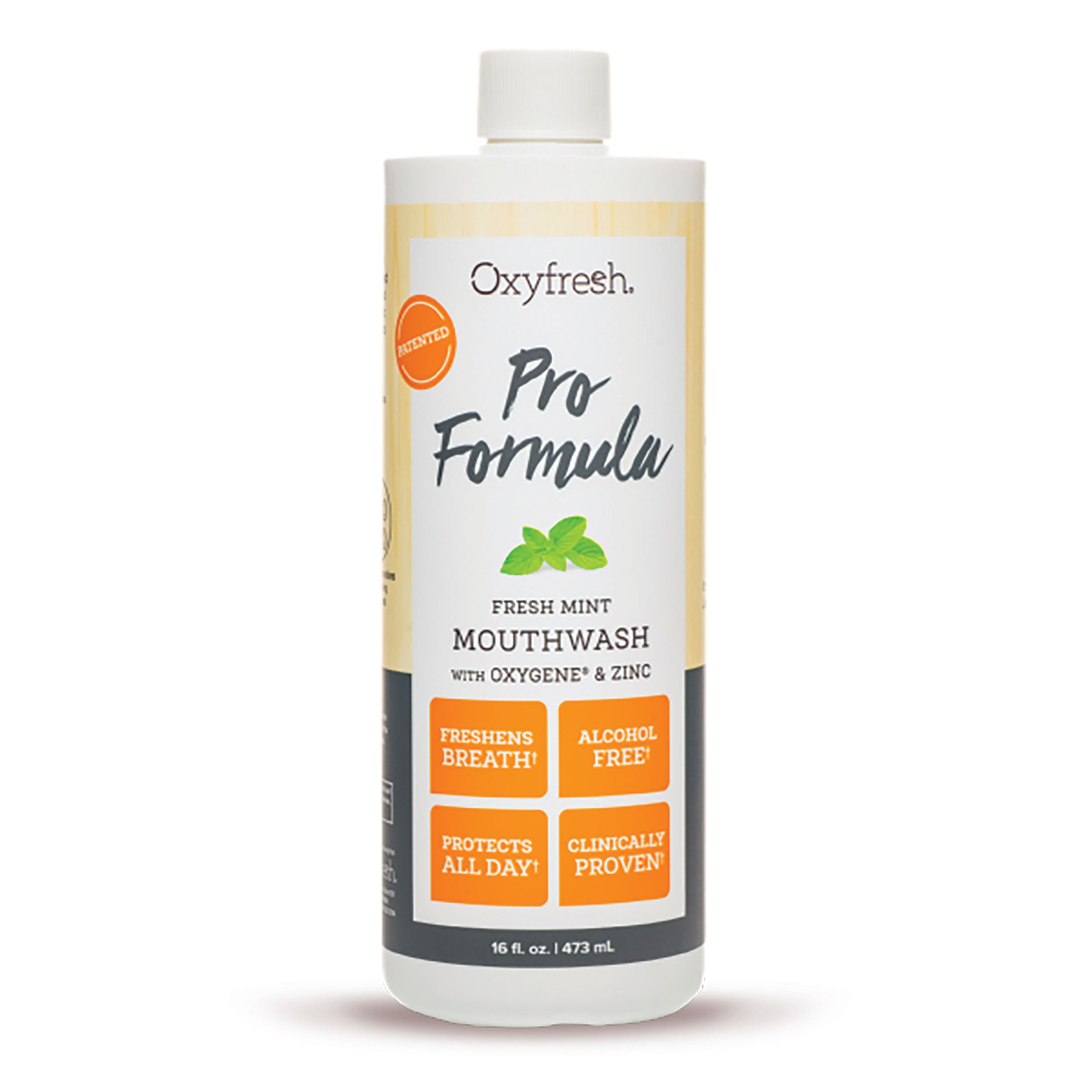
Salivary testing can produce a wide variety of results, from buffering capacity to identifying prominent bacterial strains. Analyzing the saliva gives dental providers a powerful tool with which to educate and engage patients in their own oral health plan. The results of the screening may also help providers to determine and recommend professional and home care treatment to alter or maintain oral health conditions. Chairside saliva testing can be done in 5 minutes or less and be incorporated into almost any dental appointment. Saliva composition, flow, and buffering capacity play a critical role in the health of oral structures and are especially beneficial in caries risk assessment. Saliva-Check BUFFER by GC America is a quick chairside assessment that evaluates salivary consistency, resting and stimulated pH, resting and stimulated salivary flow, and buffering capacity. Xerostomia is often a slow process and many patients don’t complain until it has reached advanced stages when it begins to affect everyday life. Therefore, being able to identify at-risk individuals early can be vital for more effective treatment and prevention.
ARKRAY USA’s SillHa Oral Wellness System tests saliva using “dual wavelength reflectance technology to measure the reaction of saliva with the test pad to indicate the presence of 7 analytes. [These] can be used to assess oral health and the risk for caries and gum disease,” according to company president Bob Guest. The system uses a test strip that is analyzed by the machine and provides a visual report in only 5 minutes. SillHa uses proprietary software that creates a PDF report for the dentist’s chart and can be printed and sent home with the patient. The innovative test analyzes measurements of cariogenic bacteria, buffering capacity, ammonia, blood, leukocytes, and protein within the saliva. “These 7 biomarkers can be used to indicate or confirm a measure of oral wellness that cannot be seen without a microscope,” says Guest.
Caries Detection Technology
Advances in technology and the availability of chairside testing have enabled us to better prevent, diagnose, and treat oral disease. Steven Bloembergen, PhD, founder and CEO of GreenMark Biomedical Inc, states that his company’s goal, “Preserving Teeth for a Lifetime™,” represents a vision of ongoing product development to help patients keep their teeth as they age. Almost all dental professionals can agree with the sentiment, as we focus on disease prevention and the preservation of oral health in daily practice. GreenMark Biomedical, in collaboration with the University of Michigan, is the creator of LumiCare™ Caries Detection Rinse, which brings a fully bioresorbable nanoparticle technology to everyday dentistry in the form of a water-based oral rinse. The 2020 Cellerant Best of Class Technology Awards recognized LumiCare as a Best of Class winner. The science behind the innovative rinse relies on positively charged starch-based nanoparticles that are attracted to the negative-charged carious lesions.
GreenMark Biomedical’s LumiCare is a new caries detection rinse.
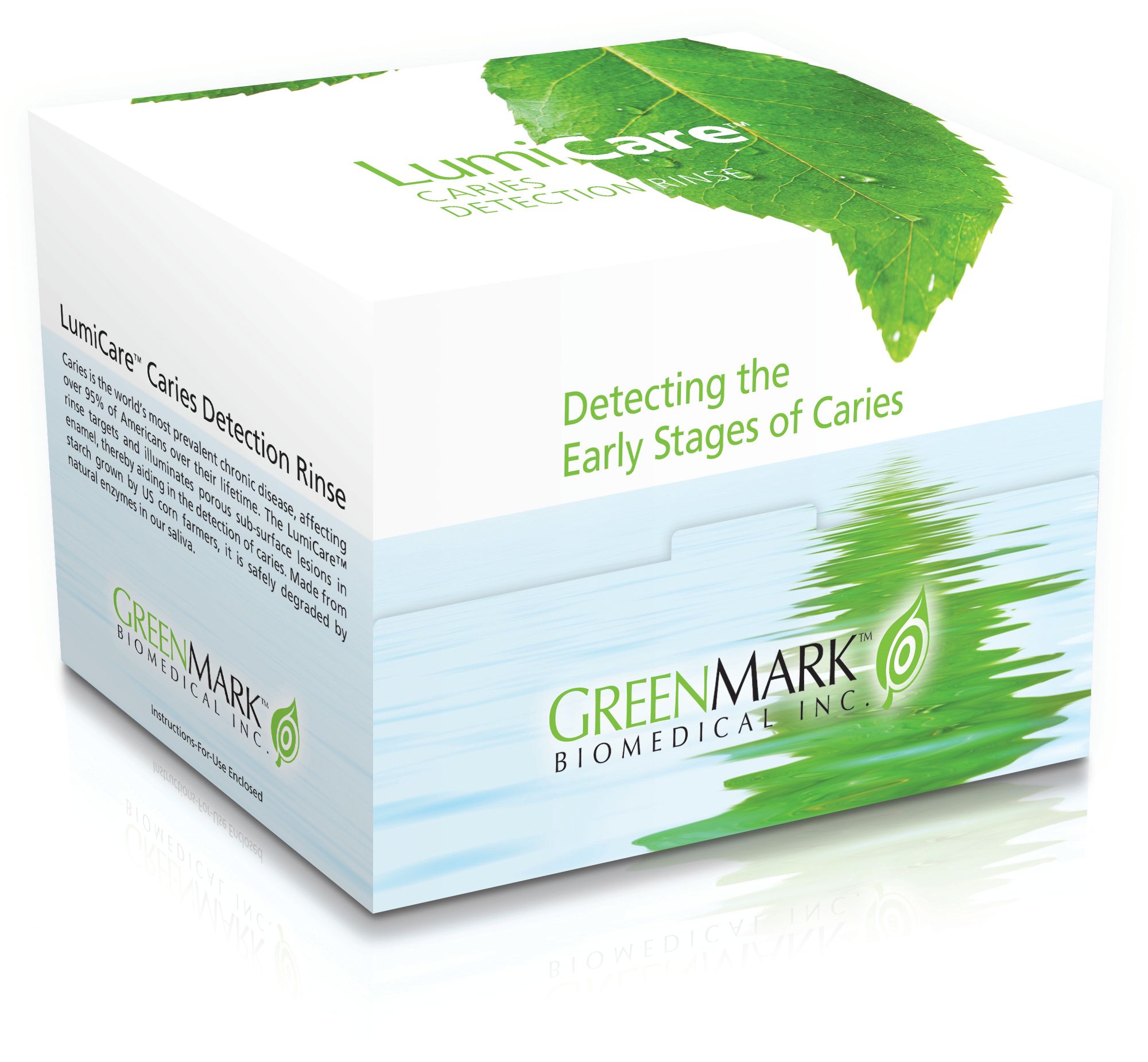
The luminescent agent becomes visible by illuminating the porous subsurface of carious lesions under the blue curing light, viewed through orange glasses or an orange shield. Bloembergen is no stranger to nanotechnology and has brought his knowledge to the benefit of dentistry. Through targeted luminescence technology, the LumiCare rinse enables the dentist to identify the earliest carious lesions and provide treatment before they progress and become a larger problem. The ease of use and single-dose packaging makes the rinse, currently pending FDA clearance as a 510(k) Class II device, a simple and easy addition to any dental evaluation workflow. GreenMark is creating additions to the innovative line of products using nanotechnology and is developing a targeted, noninvasive treatment that can change how early carious lesions are arrested by delivering minerals to the enamel subsurface and restoring lesions in a more natural way.
Antimicrobial Advances
When decay goes beyond incipient caries and restorative treatment is necessary, the dentist preps the restoration and places the filling. However, it is not possible to remove all bacteria prior to the filling replacement and the risk of recurrent caries lurks. FiteBac Antimicrobial Cavity Cleanser, created by FiteBac Dental, LLC, is dentistry’s first FDA-approved antimicrobial cavity cleanser. Looking at an x-ray, the dentist may often debate the black line under an existing restoration, pondering whether it is recurrent decay. Applying the FiteBac cleanser with a microbrush in the cavity prep inhibits the microbial presence prior to the restoration placement, reducing the risk of restoration failure in the future. An added benefit is the product’s ability to cleanse the exposed dentinal tubules, thus allowing a stronger restoration bond. FiteBac has their sights set on FDA approval in 2021 for an antimicrobial bonding agent and an antimicrobial ortho sealant. One of the biggest challenges for orthodontistry patients is effectively cleaning around orthodontic brackets, and often, decalcification and decay are exposed when the brackets are removed. It is encouraging that there is a product on the horizon to counteract the effect of the oral microbiome and poor oral care associated with orthodontic treatment.
The antibacterial properties of Infinix can be a great benefit when treating children with advanced stage caries or at-risk elderly patients with root caries.
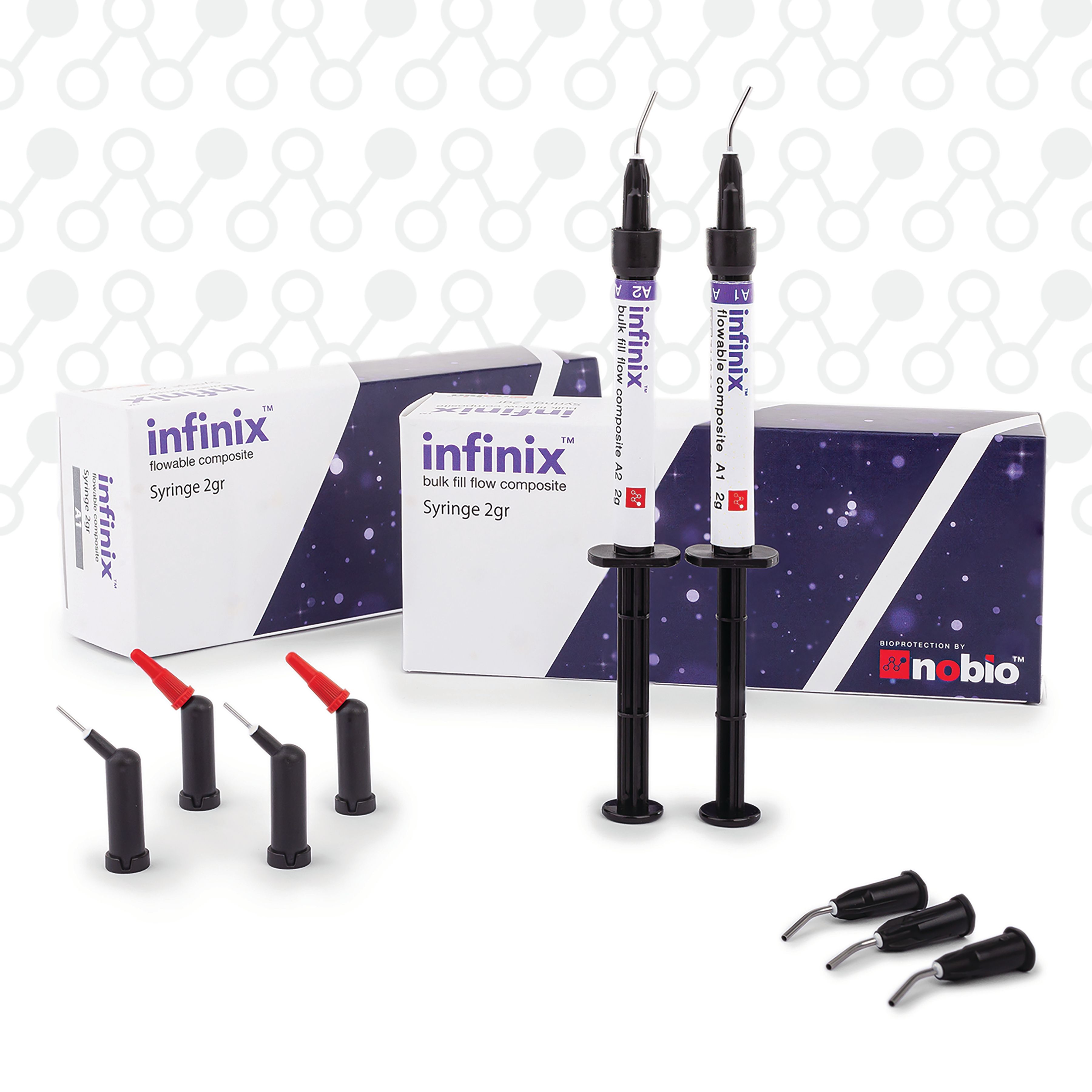
Composite That Fights Bacteria
Ervin Weiss, cofounder of Nobio Ltd, is a dentist and microbiologist who spent decades studying the complex oral environment. We know that biofilm is considered a multicellular organism and the daily mission of hygienists is to disrupt it one dentition at a time, though it is never fully eliminated. Weiss says, “Each time we brush, we injure the biofilm to help the immune system and to inhibit it from flourishing. Our oral microbiome is challenged by saliva, food, and friction on a daily basis.” Most people have active decay, restorations, periodontal disease, or a combination of risk factors making them susceptible to adverse effects. Restorations generally do not last a lifetime and whether caused by breakdown or recurrent decay, they typically must be replaced. Nobio set out with a goal not to change the whole oral microbiome, but rather to add an antimicrobial property to the localized surface. Weiss has a wealth of knowledge when it comes to the oral environment and comments, “The only way to control the disease is to fight the biofilm from the side that is protected,” which means the first few layers where it adheres to the oral structure. Biofilm is laid down in layers and mechanical means remove the newest outer layers first; damage generally happens within the deeper layers adhered to the structure or tooth.
Nobio has spent many years creating a restorative composite material known as Infinix. It has the ability to kill bacteria through its own antibacterial properties, killing the first few layers of biofilm formation it comes in contact with. Another 2020 Cellerant Award recipient, Nobio aims to change the long-term outcome of composite restorations. This could be a game changer for Class II and Class V restorations, which are generally at a higher risk of failure. For dentists, the antibacterial properties of Infinix can make all the difference when treating children with advanced stage caries or at-risk elderly patients with root caries. Infinix has received FDA clearance for “stopping demineralization” with its antibacterial properties. According to Weiss, the filler particles themselves within the composite material contain the antibacterial effect and are insoluble. Whether dentists are looking for a flowable or regular composite material in a variety of shades, Infinix by Nobio is worth considering, especially for high-risk patients.
The oral microbiome is a challenging environment, often with a mysterious makeup that can alter and vary depending on a variety of factors. Aging, dietary changes, or medications can make it difficult for the body to combat caries and periodontal disease. With innovations in technology and advancement in knowledge, we can help our patients maintain oral health, leading to improved oral health outcomes. Although 2020 brought challenges to dentistry, it also rewarded us with an array of promising products to enhance our practice.
